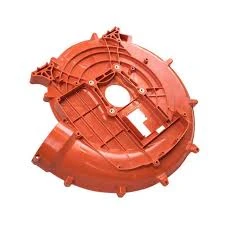Mobile:+86-311-808-126-83
Email:info@ydcastings.com
French
motor housings
Understanding Motor Housings Importance, Types, and Applications
Motor housings play a crucial role in the functionality and durability of electric motors. As a protective enclosure, these housings not only safeguard the internal components of the motor, such as the stator and rotor, but also contribute to its efficiency and overall performance. In this article, we will explore the significance, various types, and applications of motor housings.
Significance of Motor Housings
The primary function of a motor housing is to protect the internal components from external environmental factors such as dust, moisture, and mechanical damage. A robust housing ensures that the motor operates under optimal conditions, thereby prolonging its lifespan and minimizing the risk of failures. Moreover, motor housings assist in noise reduction—a vital consideration in many industrial applications—by dampening vibrations and providing a barrier to sound transmission.
Aside from protection, motor housings also serve as a heat sink. Electric motors generate heat during operation, and an efficient housing design can help dissipate this heat, maintaining the operational temperature within safe limits. This thermal management is essential to prevent overheating, which can lead to a reduction in performance or even catastrophic failure.
Types of Motor Housings
Motor housings come in various shapes, sizes, and materials, each designed for specific industrial applications
. The main types include1. Cast Iron Housings Known for their durability and ability to withstand harsh environmental conditions, cast iron motor housings are commonly found in heavy-duty applications. They provide excellent thermal conductivity, which aids in heat dissipation, and are particularly effective in reducing vibrations.
2. Aluminum Housings Lightweight yet strong, aluminum housings are ideal for applications where weight is a critical factor, such as in automotive and aerospace industries. They also offer good corrosion resistance and thermal efficiency, making them versatile for various environments.
motor housings

3. Plastic Housings While not suitable for extremely heavy-duty operations, plastic housings are prevalent in smaller motors and consumer electronics. They are lightweight, cost-effective, and can be molded into complex shapes, providing flexibility in design.
4. Stainless Steel Housings Often used in food processing and pharmaceutical industries, stainless steel housings are resistant to corrosion and contaminants. They meet stringent cleanliness and hygienic standards, ensuring that operations in sensitive environments remain safe.
5. NEMA and IEC Housings These housings are defined by specific standards set forth by organizations like the National Electrical Manufacturers Association (NEMA) and the International Electrotechnical Commission (IEC). They are categorized based on their environmental protection levels, efficient for various applications from industrial plants to outdoor settings.
Applications of Motor Housings
Motor housings are integral to an array of applications across multiple industries. In the manufacturing sector, they are commonly utilized in conveyor systems, pumps, and fans, facilitating efficient motion and operation. In the automotive industry, electric vehicles (EVs) rely heavily on well-engineered motor housings to enhance battery efficiency and overall performance.
In HVAC systems, motor housings help manage fan motors that ensure proper air circulation and temperature control in residential and commercial buildings. They also find applications in household appliances such as washing machines, air conditioners, and refrigerators, where effective airflow and quiet operation are essential for user satisfaction.
Moreover, with the rise of renewable energy technologies, motor housings are being employed in wind turbines and solar panel systems, where they contribute to sustainable energy solutions by housing the motors that facilitate these clean technologies.
Conclusion
In conclusion, motor housings are fundamental components that provide protection, thermal management, and noise reduction for electric motors. Understanding the various types of housings and their applications equips professionals with the knowledge necessary to select the right motor housing for their specific needs—crucial for optimizing operational efficiency and ensuring the longevity of motor systems. As technology progresses, the design and manufacturing of motor housings will continue to evolve, contributing to advancements across numerous industries.











